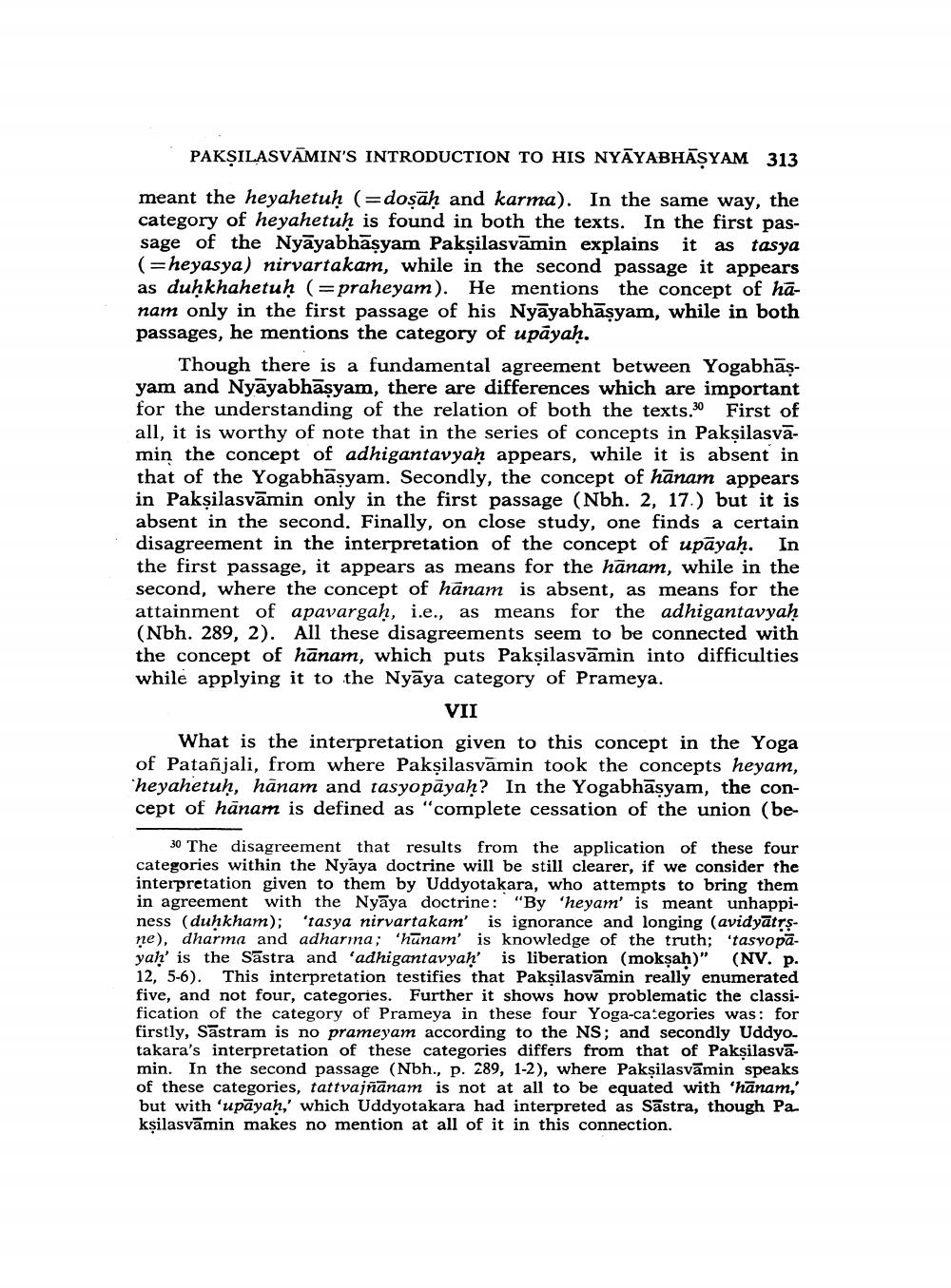________________
PAKŞILASVAMIN'S INTRODUCTION TO HIS NYĀYABHASYAM 313
meant the heyahetuh (=dosah and karma). In the same way, the category of heyahetuḥ is found in both the texts. In the first passage of the Nyāyabhāsyam Paksilasvāmin explains it as tasya (=heyasya) nirvartakam, while in the second passage it appears as duḥkhahetuḥ (=praheyam). He mentions the concept of hānam only in the first passage of his Nyāyabhāṇyam, while in both passages, he mentions the category of upāyaḥ.
Though there is a fundamental agreement between Yogabhāsyam and Nyāyabhāṇyam, there are differences which are important for the understanding of the relation of both the texts.30 First of all, it is worthy of note that in the series of concepts in Paksilasvāmin the concept of adhigantavyan appears, while it is absent in that of the Yogabhäsyam. Secondly, the concept of hānam appears in Paksilasvāmin only in the first passage (Nbh. 2, 17.) but it is absent in the second. Finally, on close study, one finds a certain disagreement in the interpretation of the concept of upāyaḥ. In the first passage, it appears as means for the hānam, while in the second, where the concept of hanam is absent, as means for the attainment of apavargah, i.e., as means for the adhigantavyah (Nbh. 289, 2). All these disagreements seem to be connected with the concept of hānam, which puts Paksilasvāmin into difficulties while applying it to the Nyāya category of Prameya.
VII What is the interpretation given to this concept in the Yoga of Patañjali, from where Paksilasvāmin took the concepts heyam, heyahetuḥ, hānam and tasyopāyaḥ? In the Yogabhāsyam, the concept of hānam is defined as "complete cessation of the union (be
30 The disagreement that results from the application of these four categories within the Nyaya doctrine will be still clearer, if we consider the interpretation given to them by Uddyotakara, who attempts to bring them in agreement with the Nyāya doctrine: "By 'heyam' is meant unhappiness (dunkham); tasya nirvartakam' is ignorance and longing (avidyātrsne), dharma and adharma; 'hunam' is knowledge of the truth; "tasyopayah' is the Sastra and 'adhigantavyan' is liberation (moksah)" (NV. p. 12, 5-6). This interpretation testifies that Paksilasvāmin really enumerated five, and not four, categories. Further it shows how problematic the classification of the category of Prameya in these four Yoga-categories was: for firstly, Sastram is no prameyam according to the NS; and secondly Uddyotakara's interpretation of these categories differs from that of Paksilasvamin. In the second passage (Nbh., p. 289, 1-2), where Paksilasvāmin speaks of these categories, tattvajñānam is not at all to be equated with 'hānam,' but with 'upāyah,' which Uddyotakara had interpreted as Sastra, though Pa. ksilasvāmin makes no mention at all of it in this connection.




